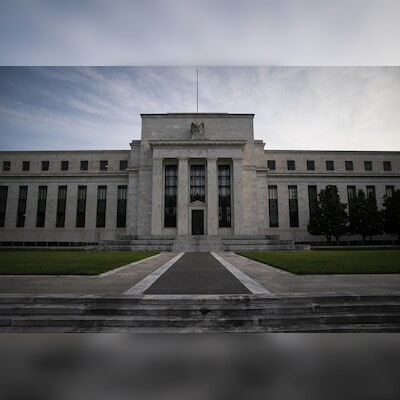)
The widened US-India rate spread offers companies a larger margin of safety when converting rupee borrowings into dollar loans via currency swaps Credit: Bloomberg
Indian firms are opting for cross-currency swaps to convert part of their rupee debt into dollars in an attempt to trim borrowing costs as US interest rates decline, six bankers told Reuters.
The Federal Reserve began easing with a larger-than-expected 50 basis point rate cut on Wednesday and is projected to reduce borrowing costs by a total of 200 bps over the next 15 months, as per the central bank’s forecast.
Two Indian conglomerates, a local unit of a global investment firm, and a renewable energy company recently used cross-currency swaps to convert rupee liabilities into dollars, a banker at a foreign bank said.
The banker did not want to be named because he is not authorized to speak to the media.
Cross-currency swaps are derivative structures that allow companies to convert loan principal, interest repayments, or both, from one currency to another, helping manage interest rates and forex risk.
“Those expecting lower US rates in the future may consider converting INR liabilities to floating-rate USD liabilities through currency swaps, or principal-only swaps, as a cost-reduction measure,” Ashhish Vaidya, managing director and treasurer, global financial markets at DBS Bank India, said.
Banks and foreign exchange advisors are suggesting clients use the 2-year tenure for the currency swap because it is offering the highest interest rate saving currently, the bankers said.
The US secured overnight financing rate (SOFR), a benchmark rate for dollar-denominated derivatives, has been declining in anticipation of the rate cut, with the 2-year SOFR down 35 bps so far in September and 120 bps on the quarter.
In contrast, India’s 2-year Mumbai Interbank Forward Offered Rate is down just 20 bps in September and 74 bps on the quarter.
The widened US-India rate spread offers companies a larger margin of safety when converting rupee borrowings into dollar loans via currency swaps.
CURRENCY SWAPS NOT RISK-FREE
Currency swaps, while saving companies on interest costs, can expose them to foreign exchange risk, potentially negating interest savings and leaving the firm at a disadvantage if the rupee depreciates significantly by the time the swap is reversed.
Analysts say that the rupee’s low volatility fosters corporate confidence in these trades.
Companies that have a natural hedge though dollar-denominated receivables can also mitigate a part of the currency risk.
“Corporates who have strong risk management framework or a natural hedge would be more suited to do such INR to USD swaps,” Akshay Kumar, head of global markets India at BNP Paribas said.
(Only the headline and picture of this report may have been reworked by the Business Standard staff; the rest of the content is auto-generated from a syndicated feed.)
First Published: Sep 19, 2024 | 2:49 PM IST
Thank you for taking the time to read this article! I hope you found the information insightful and helpful. If you enjoyed this type of content, please consider subscribing to our newsletter or joining our community. We’d love to have you! Feel free to share this article with your friends and family, who might also find it interesting.

Kanishk Singh has always had a keen interest in fast-paced cars. For the past three years, he has been writing about automobiles, but his fascination with cars dates back even further. He thoroughly enjoys learning about their features and expressing his thoughts through his writing. Kanishk also has a profound interest in the stock market, shares, and business strategies. He possesses a wealth of knowledge on these subjects and consistently writes articles on them. Currently, he is working as a writer for Lattestnews24, specifically focusing on the Automobile, Finance, and Business categories. His well-crafted words are highly appreciated by the readers, as they find them both informative and creative.
